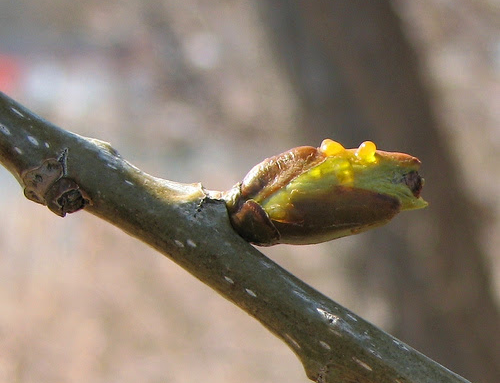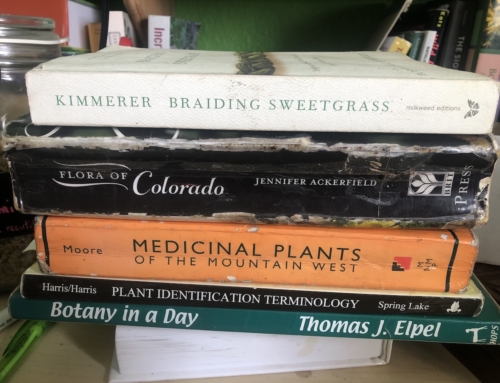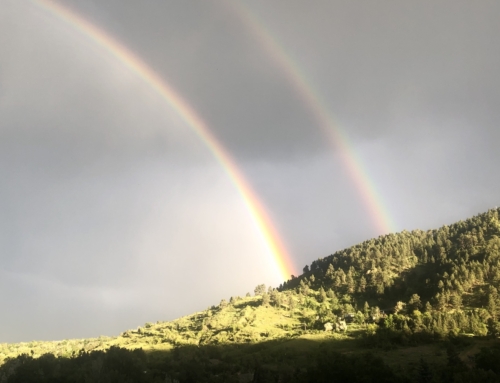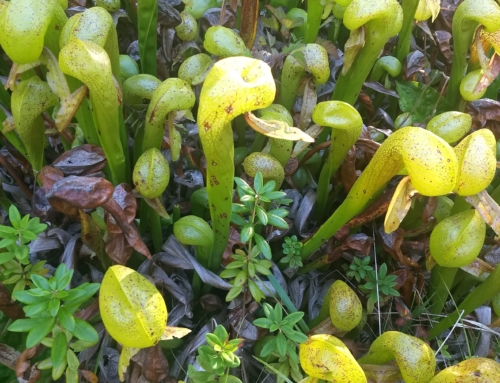Mugwort
Artemisia ludoviciana
Plant Family: Asteraceae (Compositae)
Related Plants: Wormwood (Artemisia absinthium), Silver Sage (Artemisia frigida), Sagebrush (Artemisia tridentata).
Appearance: A silvery green perennial with leaves that smell like Sage. While Mugwort is not botanically related to true Sage (Salvia spp.), their similar essential oils gives them some overlapping medicinal uses, and in fact some Artemisia species are colloquially called “Silver Sage” or “Sagebrush”. Leaves are alternate and the leaf shape is variable. While I typically see plants about 12 inches tall, in moist conditions the plant can reach up to 6 feet. Plants often grow in groups, and may cover a hillside or ditch. Typically blooming later in summer (July-Oct).

Ecology: One of our plentiful and versatile local medicinal plants, Mugwort can thrive in many different ecosystems. Plants are most common in open, dry places, and are typically found between 4,000 and 9,500 ft in elevation (some reported to grow as high as 11,200 ft!) Mugwort can be found in literally every county in Colorado.
Wildcrafting: It’s considered best to harvest this plant in flower, but anytime the plant is active is acceptable. Because of the silvery color, it may be difficult to tell in the fall when this perennial has died back to the roots for the winter, so be sure to get it before then. Pick about 1 stem for every 20+ plants you see. Use your pruning clippers, scissors, or sharp knife to make a clean cut at the base of the stem where the plant meets the ground.
Medicinal Preparations: Mugwort can be rolled into bundles and dried if the goal is to create a clearing/disinfectant smudge. For tea, put the whole plant into a brown paper grocery bag and let it dry, then store in a class jar away from sunlight to preserve the essential oils. Use hot or cold water infusion at a ratio of about 1-3 oz dry herb per cup. For tincture, lightly pack leaves/flowers into a mason jar and cover with 40% alcohol. Be sure all the plant matter is submerged, and strain your tincture in about a month.
Medicinal properties: I’ve most often utilized Mugwort for digestive disturbances: especially gas and bloating, but also indigestion or poor nutrient absorption. For digestive uses, I’ve found I like an overnight infusion in cold water. The hot tea stimulates circulation to the reproductive organs, making it a useful emmenagogue to bring on menses, and for this reason all Mugwort should be avoided in pregnancy. Like many plants high in essential oils, Mugwort is also an expectorant and the hot tea or inhaled steam can be helpful for mucus-ridden lung infections. One alternative common name “wormwood” speaks to its capacity to inhibit pinworm infections, which I have not personally tried. In Medicinal Plants of the Mountain West, Michael Moore writes that the key to treating pinworm infections with Mugwort is to be super consistent, taking at least 4 oz of the dry plant each day as tea in divided doses for 1-2 weeks, and as a retained enema 1/week. When dry bundles of the plant are burned as a smudge, the released scent is emotionally and spiritually clearing. I’ve mostly burned mugwort smoke when moving into a new home. Some people put Mugwort by their beds at night or even in their pillow cases, because inhaling the essential oils while sleeping can enhance dreams, enable lucid dreams,make dreams more memorable, or even keep you from sleeping entirely!






